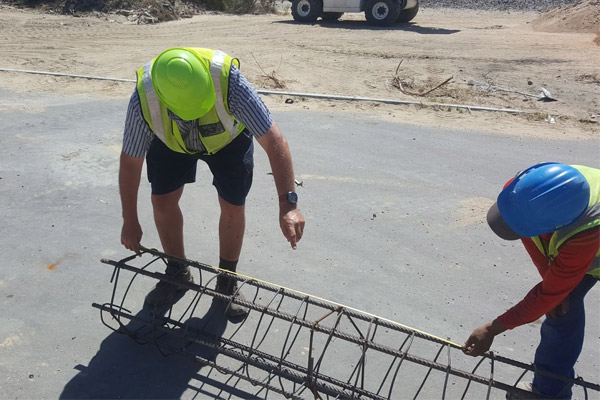The design of foundations involves the integration of various data sources, including lab tests, geotechnical site investigation, geology maps, insitu geotechnical testing, and imposed loads.
Here is a general approach to how these data sources can be used to design a shallow foundation:
The first step is to gather data on the soil and rock properties at the site, including strength, stiffness, density, and other relevant characteristics. This information is obtained through lab tests on soil and rock samples collected during the geotechnical site investigation. The soil and rock properties are essential in determining the bearing capacity of the foundation and its settlement behaviour.
The geotechnical site investigation data, including borehole logs, soil and rock profiles, groundwater levels, and other relevant information, is used to assess the subsurface conditions at the site. This information is used to identify any geological hazards or risks that may impact the foundation design, such as landslides, soil liquefaction, or expansive soils.

Geology maps provide a broader understanding of the site’s geology, including the location and characteristics of different soil and rock formations. This information is essential in selecting appropriate soil and rock parameters for design purposes.
Insitu geotechnical testing, such as standard penetration tests (SPT) or cone penetration tests (CPT), can provide additional data on the soil and rock properties at the site. These tests are usually performed in situ to understand better the subsurface conditions, including soil and rock strength, stiffness, and deformation behaviour.
The imposed loads on the foundation, including the weight of the structure, dead loads, and live loads, are used to determine the bearing capacity and settlement behaviour of the foundation. The loads are obtained from architectural and structural plans.
We can design the foundation/pile with all the necessary data gathered. The design process involves selecting an appropriate foundation/pile type based on the site’s conditions and calculating the bearing capacity and settlement behaviour of the foundation under the imposed loads. The design should also consider any geological hazards or risks identified during the investigation and appropriate measures to minimise or mitigate them.
In summary, the design of foundations/piles involves integrating various data sources to assess the subsurface conditions at the site, determine the bearing capacity and settlement behaviour of the foundation under the imposed loads, and select an appropriate foundation type. The design process requires our expertise and experience to ensure the foundation’s safe and stable performance.
Soil Eng provides comprehensive and efficient services across the full breadth of geotechnical engineering, including investigation, analysis, design, and reporting.
We value our client relationships and work diligently to achieve the best outcomes for projects and properties.
Our feedback speaks for itself: